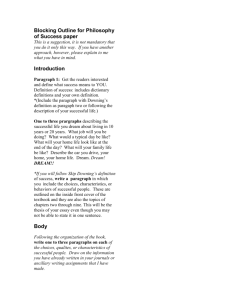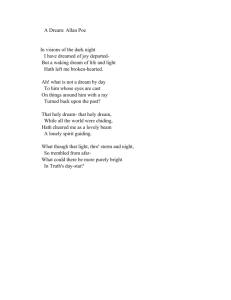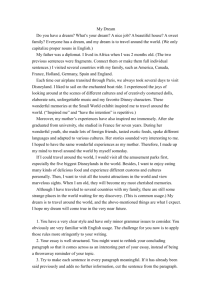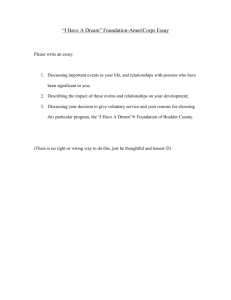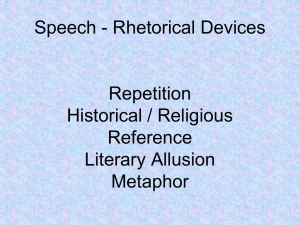“I Have a Dream” Rhetorical Analysis Exercise
advertisement
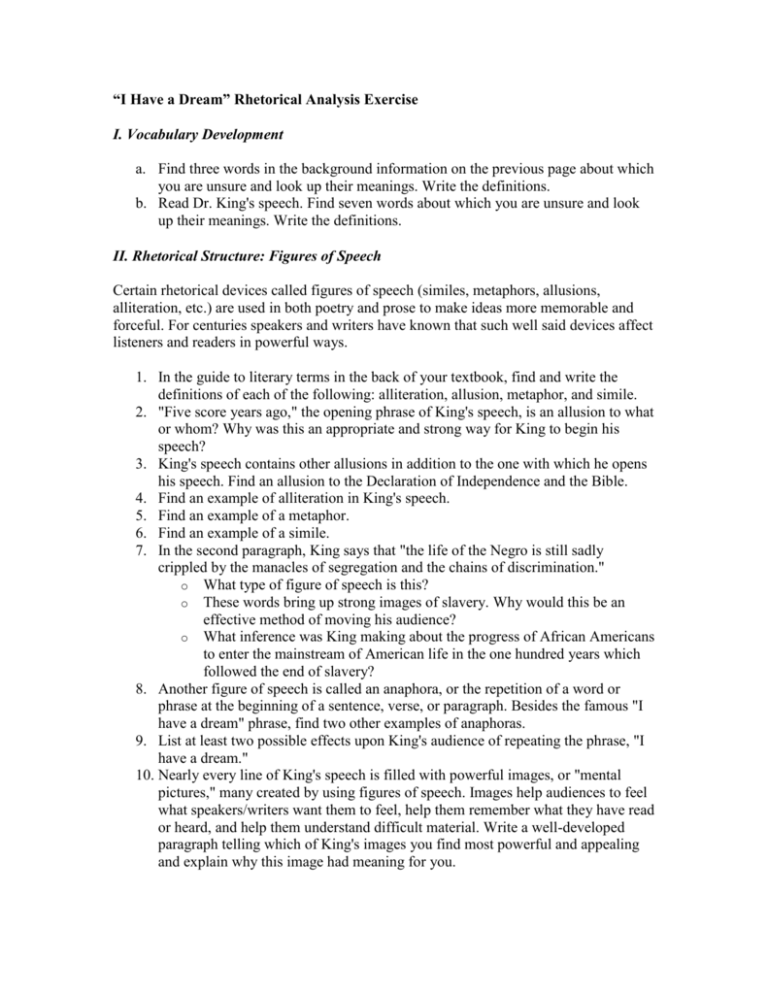
“I Have a Dream” Rhetorical Analysis Exercise I. Vocabulary Development a. Find three words in the background information on the previous page about which you are unsure and look up their meanings. Write the definitions. b. Read Dr. King's speech. Find seven words about which you are unsure and look up their meanings. Write the definitions. II. Rhetorical Structure: Figures of Speech Certain rhetorical devices called figures of speech (similes, metaphors, allusions, alliteration, etc.) are used in both poetry and prose to make ideas more memorable and forceful. For centuries speakers and writers have known that such well said devices affect listeners and readers in powerful ways. 1. In the guide to literary terms in the back of your textbook, find and write the definitions of each of the following: alliteration, allusion, metaphor, and simile. 2. "Five score years ago," the opening phrase of King's speech, is an allusion to what or whom? Why was this an appropriate and strong way for King to begin his speech? 3. King's speech contains other allusions in addition to the one with which he opens his speech. Find an allusion to the Declaration of Independence and the Bible. 4. Find an example of alliteration in King's speech. 5. Find an example of a metaphor. 6. Find an example of a simile. 7. In the second paragraph, King says that "the life of the Negro is still sadly crippled by the manacles of segregation and the chains of discrimination." o What type of figure of speech is this? o These words bring up strong images of slavery. Why would this be an effective method of moving his audience? o What inference was King making about the progress of African Americans to enter the mainstream of American life in the one hundred years which followed the end of slavery? 8. Another figure of speech is called an anaphora, or the repetition of a word or phrase at the beginning of a sentence, verse, or paragraph. Besides the famous "I have a dream" phrase, find two other examples of anaphoras. 9. List at least two possible effects upon King's audience of repeating the phrase, "I have a dream." 10. Nearly every line of King's speech is filled with powerful images, or "mental pictures," many created by using figures of speech. Images help audiences to feel what speakers/writers want them to feel, help them remember what they have read or heard, and help them understand difficult material. Write a well-developed paragraph telling which of King's images you find most powerful and appealing and explain why this image had meaning for you. III. Understanding the Dream 1. Write a paragraph summarizing King's dream in your own words. 2. What are some of the specific acts of injustice against African Americans which King cites in his speech? 3. Besides the Declaration of Independence and the Bible, King cites "the American dream" as a source for his own dream. What is the American dream? Discuss this concept with friends and family members and then write a composite definition for this commonly used term. 4. Near the end of his speech, King names many different states. Why do you think he did this? 5. "I Have a Dream" was a persuasive speech meant to convey to King's audience the need for change and encourage them to work for federal legislation to help end racial discrimination. If you had been in the vast crowd that day, do you think you would have been moved my King's speech? Why or why not? IV. Relating to the Dream 1. What is your definition of racism? 2. The civil rights movement was met with much opposition, from Southern governors and other elected officials to cross-burning members of the Ku Klux Klan. Unfortunately, Civil Rights opponents sometimes turned to violence against black leaders and members of the black community. o Why do you think extreme right-wing organizations such as the Klan would chose violence as a means to fight against the civil rights movement, even though their actions enraged the rest of the country and gained sympathy for the cause of Southern blacks? o Why do you think the black community withstood such violent attacks without responding with their own violent retaliations? 3. Today's "skinheads" share the same radical right-wing philosophies and views supporting white supremacy and segregation of the races that had been held by Hitler during World War II and the Klan during the civil rights movement. Do you think today's skinheads are dangerous? Why or why not? 4. King was assassinated for his work in civil rights. A quotation from the Bible on the memorial at his gravesite reads, "Behold the dreamer. Let us slay him, and we will see what will become of his dream." What do you think has become of King's dream? Write two paragraphs: one telling in what ways the dream has been fulfilled and one telling what yet remains to be accomplished. From webenglishteacher.com



